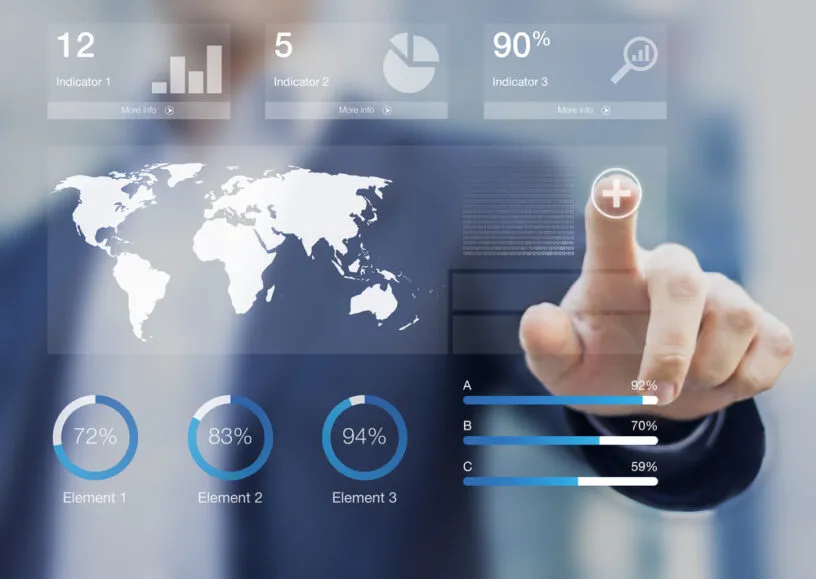Central Monitoring Is the Key to Data Integrity in Decentralized Clinical Trials

The COVID-19 pandemic drove speedy adoption of new technologies and ways to collect and monitor clinical data remotely. Now, digital capabilities such as remote monitoring, telehealth visits, electronic consent (eConsent), electronic patient-reported outcomes (ePRO), electronic clinical outcome assessments (eCOA), and wearables/sensors enable decentralization across the clinical continuum. The benefits of decentralized clinical trials (DCTs) have caused them to quickly gain popularity in a post-COVID-19 world. Improved recruitment speed, increased participant retention and diversity, enhanced participant experiences, and trial cost and timeline reductions -- all are creating confidence that DCTs are the “new normal” in clinical research.
Impact of the Emergence of DCTs on Clinical Data Collection and Analysis
DCTs present both opportunities and challenges for data collection and analysis. Data is collected from a wide array of divergent high-volume and high-velocity sources, and many do not follow existing CDISC standards. While this data democratization opens up ample opportunities to explore novel endpoints using advanced analytics, it also introduces security risks and data monitoring challenges.
“It’s okay not to be perfect. Every data point is not equal, and we should prioritize data points that have the highest impact.”
– Wayne Walker, SVP, Rave Platform Technology (Medidata)
Increasingly, traditional methods of retrospective source data verification and data cleaning processes are becoming obsolete or impractical—i.e. data collected at the source and / or is patient-reported. DCTs require proactive, scalable, and centralized data management processes which both interrogate data at the point of capture and provide continuous oversight of data integration, flow, and quality. Centralized risk-based data management strategies should focus on core processes and critical data points most likely to impact data integrity and interpretability. This approach relies less on how the data looks in a case report form, or which edit checks to add, and more on the risks related to data collection and aggregation across different modalities. Some of the key questions to consider when planning for inclusion of non-eCRF data are:
- How will the continuous data be compressed?
- What amount of variability in streaming data is “normal” (that is, expected versus a signal for potential risk)?
- How much data can be omitted without having to report it as non-compliant (for example, data coming in-stream)?
- How will you identify risk signals early for timely notification of the site and/or patient?
- How should issues be raised if a signal is detected?
Unified Data Drives Improved Centralized Monitoring Strategies
Centralized monitoring is a holistic data surveillance approach that uses advanced statistical and analytical tools to identify data gaps, anomalies, site performance issues, and other study issues that may be more serious than those identified by transactional data reviews. An optimized approach to remote and centralized monitoring requires aggregation of data from siloed and disparate systems into a unified picture of the patient journey, site performance, and overall trial health. Today, data can be efficiently aggregated on unified clinical trial platforms that enable identification of data patterns, gaps, and safety signals. These platforms also allow for systemic risk monitoring and early issue detection. Unified data platforms are fueling changes in the traditional roles played by statisticians, data managers, and monitors. Personnel across the clinical trial spectrum are converging around centralized statistical monitoring tools and processes. This convergence is fostering better collaboration and breaking historical siloes that often led to trial delays.
How Centralized Monitoring Can Be Used to Enhance Patient Compliance and Data Consistency
The increased adoption of electronic clinical outcome assessments (eCOA) and electronic patient-reported outcomes (ePRO) has created a new challenge: ensuring patients are compliant with completing questionnaires and diaries. Centralized monitoring is considered one of the best approaches to identify potential noncompliance quickly, so that patients and sites can be contacted for root cause analysis and retraining.
Furthermore, centralized monitoring approaches that aggregate all data are critical to ensure consistency between patient-reported data and data collected during procedures or assessed by the physician, thereby merging subjective and objective outcomes. Misconduct is another area requiring new ways to analyze data, and one where centralized monitoring can have an impact using, for example, system audit data, geo tags, and comparison of data collected during on-site visits vs. data collected remotely during home-health visits.
Summary
Every disruptive innovation has to be matched with an innovative business model, and this is certainly true for the evolution and decentralization of clinical trials. As DCTs continue to evolve and employ an increasingly diverse range of digital technologies, it is important that sponsors and CROs create robust data collection and monitoring strategies to plan how and where data will be ingested, stored, analyzed, and monitored. Centralized monitoring strategies built on unified data platforms can help aggregate and analyze data in real time, and provide insights to a variety of functional teams across the trial continuum.
For more information, download our white paper below.
Contact Us

